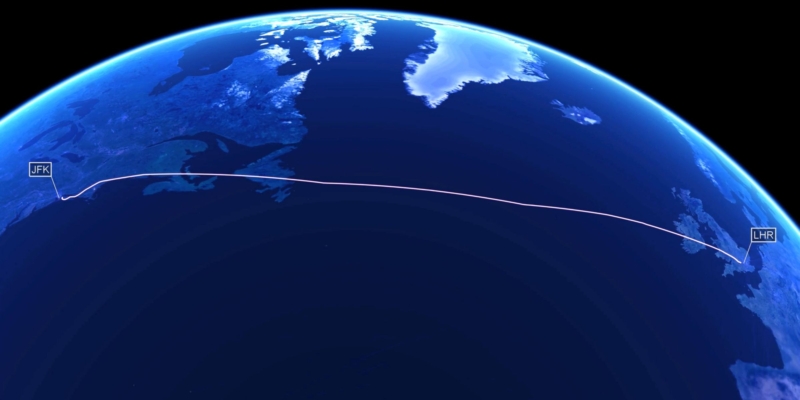In an era marked by a climate crisis and a growing commitment to securing a sustainable future, the aviation industry stands at a crossroads. As a significant contributor to carbon emissions, there is a huge need for collaboration and innovation in our industry if we are to reach the 2050 target for Net Zero flying.
Virgin Atlantic’s Flight100 is a landmark moment, offering a glimpse into commercial long-haul flight powered by sustainable aviation fuel (SAF). This week’s historic flight across the Atlantic showcased the results of a radical collaborative effort, and NATS is proud to have supported this achievement.
Through these experiences, air traffic control (ATC) will continue to learn more about our customers and implement changes to optimise our services that will support a more efficient future.
Departing from Heathrow’s runway 27R at 11.48(L), Flight100 embarked on its route towards New York’s JFK airport. The flight achieved a 3Di score of 6.1 in UK airspace. There was a short level off as the aircraft was handed over to our controllers, where the team helped facilitate direct routings before handing over to our Irish counterparts.

Flight100’s continuous climb through UK airspace
ATC serves as the unseen facilitator of air travel, ensuring safe and efficient flying for millions of flights each year. Safety is at the heart of what we do, it’s why NATS exists. Our focus will always be to enhance safety, but we are also key enablers in aviation’s decarbonisation journey.
We work with our airline customers to identify optimal routes, minimising fuel consumption and subsequent emissions. This is integrated into our network, and we are evolving our services to provide optimised routings for our customers.
By determining the most efficient flight paths through new technologies such as ADS-B, a new satellite tracking system over the Atlantic, we can now get aircraft on the most efficient path and offer real time flight optimisation, which was fundamental to Flight100’s path over the Atlantic.
The successful completion of Flight100 showcases the feasibility of commercial aircraft flying on 100% SAF, which is underscored by the collaborative efforts within the aviation community. Of course, SAF is a core element of the industry’s decarbonisation pathway as set out in the UK Sustainable Aviation coalition’s roadmap to Net Zero carbon.
ATC is a cornerstone in fostering cooperation and has an ongoing commitment to enhance our services through research and development, optimise efficiency and integrate emerging technologies that further reduce the environmental impact of air travel.
As we look ahead, the partnerships between new technologies, policy makers and dedicated professionals will continue to pave the way for greener skies, ensuring that the journey to Net Zero flying remains on track.
Credit: AirNav RadarBox
We would like to extend our thanks to our partners at AirNav RadarBox for providing the Satellite tracking data for Virgin 100 that we used to create the flight visualisation video above.
Comments
Please respect our commenting policy and guidelines when posting on this website.
